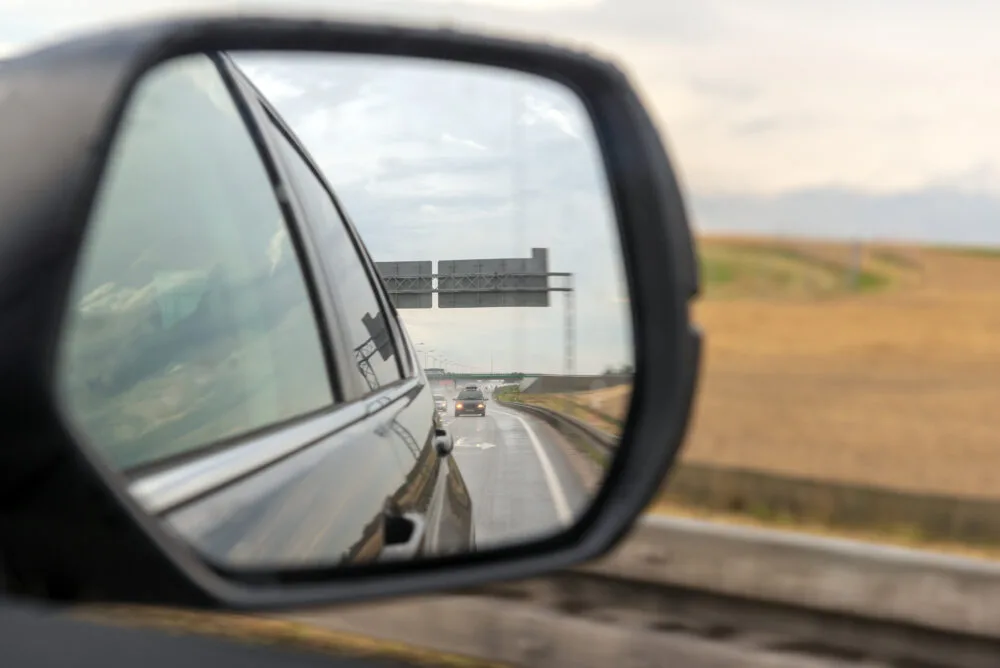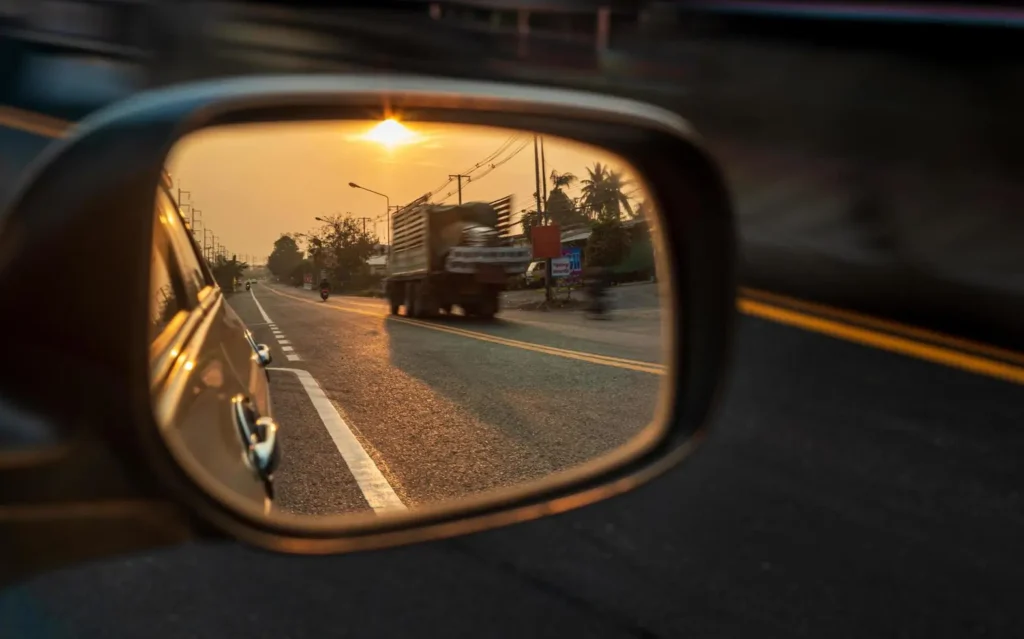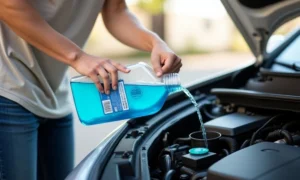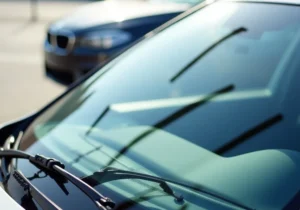How Much Is Car Window Tinting How much is car window tinting? Car window tinting...
The Legal Necessity| Are Side Mirrors Required for Vehicles?
Are side mirrors required on vehicles? Side mirrors play a crucial role in enhancing driver visibility and overall road safety. Positioned on both sides of a vehicle, they provide essential information about surrounding traffic, aiding in lane changes, merging, and parking maneuvers. However, beyond their practical utility, side mirrors also hold significant legal importance. Various jurisdictions mandate the presence of side mirrors on vehicles to ensure compliance with safety regulations and minimize the risk of accidents.
Legal Requirements for Side Mirrors
General laws and regulations regarding side mirrors on vehicles:
Side mirrors on vehicles are subject to various laws and regulations aimed at ensuring road safety. In many jurisdictions, these regulations mandate the presence, positioning, and functionality of side mirrors on all motor vehicles. These laws typically require that vehicles be equipped with at least two side mirrors, one on each side of the vehicle, to provide the driver with adequate visibility of adjacent lanes and surroundings. The mirrors must be properly adjusted to provide optimal visibility for the driver while operating the vehicle.
Overview of specific regulations in various regions and countries:
Specific regulations regarding side mirrors may vary from one region or country to another. However, the fundamental requirements generally revolve around ensuring that side mirrors provide sufficient visibility for safe driving. For example, in the United States, Federal Motor Vehicle Safety Standard (FMVSS) 111 sets requirements for rearview mirrors, including side mirrors, to ensure that they provide an adequate field of view for the driver. In the European Union, regulations such as Directive 2003/97/EC establish similar standards for side mirrors on vehicles.
Emphasis on the importance of adhering to these regulations:
Adhering to regulations governing side mirrors on vehicles is crucial for promoting road safety. Properly positioned and functional side mirrors enhance a driver’s ability to detect potential hazards, such as nearby vehicles or pedestrians, and make informed driving decisions. Failure to comply with these regulations not only increases the risk of accidents but may also result in legal penalties and liabilities for vehicle owners or operators. Therefore, it is imperative for motorists to ensure that their vehicles are equipped with compliant side mirrors and that they are properly maintained to facilitate safe driving practices.
Are Side Mirrors Required by Law?

Explanation of legal mandates regarding side mirrors on vehicles:
In many jurisdictions, side mirrors on vehicles are required by law. These laws are in place for safety reasons, as side mirrors provide crucial visibility to drivers, allowing them to monitor adjacent lanes and surroundings. The specific regulations regarding side mirrors can vary depending on the region, but generally, vehicles are mandated to have at least two side mirrors—one on the driver’s side and one on the passenger’s side. These mirrors must be positioned and adjusted to provide optimal visibility to the driver.
Discussion on the consequences of not having side mirrors as per the law:
The consequences of not having side mirrors as required by law can vary depending on the jurisdiction and the circumstances. In most cases, driving without proper side mirrors can result in traffic citations or fines imposed by law enforcement officers. Additionally, operating a vehicle without side mirrors compromises the safety of the driver, passengers, and other road users, as it impairs the driver’s ability to see surrounding traffic and obstacles. Moreover, in the event of an accident, the absence of side mirrors could lead to increased liability for the driver, as they may be deemed negligent for failing to adhere to safety regulations.
Addressing any exemptions or special cases:
While side mirrors are typically required on most vehicles, there may be exemptions or special cases where certain vehicles are not mandated to have them. For example, some motorcycles or specialized vehicles may be equipped with alternative systems such as rearview cameras or rear-facing mirrors that fulfill the visibility requirements in place of traditional side mirrors. Additionally, vintage or classic vehicles may be granted exemptions from modern safety regulations, although this can vary depending on local laws and regulations. However, it’s essential for vehicle owners to familiarize themselves with the specific requirements and exemptions applicable in their jurisdiction to ensure compliance with the law.
Side Mirror Requirements in Texas

Specific Regulations Governing Side Mirrors in Texas
In Texas, the regulations regarding side mirrors on vehicles are outlined in the Texas Transportation Code. According to §547.605 of the code, every motor vehicle is required to be equipped with at least one mirror that provides the operator with a view of the highway to the rear of the vehicle. This mirror must be mounted either inside the vehicle or outside on the left-hand side.
Furthermore, §547.606 specifies that if the rear window of a vehicle is obstructed, the operator must have two mirrors, one located on each side of the vehicle, providing a clear view of the highway to the rear.
It’s important to note that these regulations apply to all motor vehicles operated on Texas highways, including passenger cars, trucks, and motorcycles. If you want professional guidance then Reliable Auto Glass is best in business.
Comparison with Federal Laws and Regulations
While Texas has its own regulations regarding side mirrors, they generally align with federal requirements set by the National Highway Traffic Safety Administration (NHTSA). Federal regulations mandate that all vehicles must be equipped with at least one rearview mirror that provides a clear view of the road behind the vehicle. This mirror must be adjustable to allow the driver to achieve the best possible view.
In cases where the rear window is obstructed, federal regulations also require vehicles to have two side mirrors, one on each side, to compensate for the limited rear visibility.
Texas regulations regarding side mirrors are in line with these federal requirements, ensuring consistency and safety standards across the state.
Additional State-Specific Considerations
While Texas adheres to federal standards for side mirrors, there are some additional considerations drivers should be aware of:
Inspection Requirements: During vehicle inspections in Texas, inspectors will check to ensure that vehicles have the required side mirrors in good working condition. Failure to comply could result in a failed inspection.
Aftermarket Modifications: If drivers make modifications to their vehicles that affect rear visibility, such as installing aftermarket window tints or towing trailers that obstruct the rear window, they must ensure they have adequate side mirrors to compensate for the reduced visibility.
Motorcycle Regulations: Motorcyclists in Texas are also required to have mirrors that provide a clear view of the road behind them. However, the specific placement and requirements for motorcycle mirrors may differ slightly from those for other motor vehicles.
Importance of Side Mirrors Beyond Legal Obligations
Side mirrors on vehicles serve a crucial role beyond fulfilling legal requirements; they are essential components for safe driving, enhancing visibility, and reducing blind spots. Understanding their importance goes beyond mere compliance with regulations and delves into practical benefits and safety implications for drivers.
Safety implications of side mirrors on vehicle operation:
Enhanced situational awareness: Side mirrors significantly contribute to a driver’s overall situational awareness by providing a wider field of view. They allow drivers to monitor the presence of other vehicles, pedestrians, cyclists, and obstacles in adjacent lanes.
Collision prevention: Properly adjusted side mirrors can help drivers anticipate and prevent collisions by monitoring vehicles approaching from adjacent lanes. This is particularly crucial when changing lanes or merging onto highways, as it reduces the likelihood of side-impact accidents.
Monitoring blind spots: Side mirrors play a pivotal role in minimizing blind spots, which are areas around the vehicle that cannot be directly observed by the driver. By regularly checking side mirrors, drivers can mitigate the risk of accidents caused by unseen vehicles or obstacles.
Backing and parking assistance: Side mirrors aid drivers in maneuvering their vehicles safely while reversing or parking. They provide visibility of the surroundings, helping drivers navigate tight spaces and avoid collisions with stationary objects or pedestrians.
Discussion on enhancing visibility and reducing blind spots:
Proper adjustment: Ensuring that side mirrors are correctly adjusted is paramount for optimizing visibility and minimizing blind spots. The Society of Automotive Engineers (SAE) recommends adjusting side mirrors to display a small portion of the vehicle’s side and the adjacent lane, thus eliminating overlaps with the rearview mirror’s field of view.
Blind spot monitoring systems: Many modern vehicles are equipped with blind spot monitoring systems, which utilize sensors and warning indicators to alert drivers of vehicles in their blind spots. While these systems complement side mirrors, they should not be relied upon solely, and drivers should still perform visual checks using their mirrors.
Convex mirrors: Convex or “wide-angle” side mirrors offer an expanded field of view compared to flat mirrors, reducing blind spots and enhancing visibility. However, they may distort the perceived distance of objects, requiring drivers to adjust their perception accordingly.
Practical benefits for drivers:
Confidence and peace of mind: Adequate visibility provided by side mirrors instills confidence in drivers, enabling them to make informed decisions while navigating traffic and executing maneuvers.
Efficient lane changes and merging: Side mirrors facilitate smooth and safe lane changes and merging, as drivers can assess the surrounding traffic conditions without having to turn their heads excessively.
Parking assistance: Side mirrors aid in parallel parking and maneuvering in tight spaces, allowing drivers to position their vehicles accurately and avoid collisions with obstacles.
Conclusion
Side mirrors play a crucial role in ensuring road safety for both drivers and pedestrians. They provide essential visibility, allowing drivers to monitor their surroundings and make informed decisions while maneuvering on the road. Not only do side mirrors help in checking blind spots, but they also assist in gauging the distance and speed of nearby vehicles, thus reducing the risk of accidents. Feel free to contact us for any type of services or query like are side mirrors required.
FAQs
Are Side Mirrors Required By Law?
Yes, in most jurisdictions, side mirrors are required by law for vehicles. These mirrors are essential for ensuring safe driving by providing visibility of surrounding traffic.
What Happens If My Vehicle Doesn’t Have Side Mirrors?
Operating a vehicle without required side mirrors can lead to legal consequences such as fines or penalties. It may also compromise your safety and the safety of others on the road due to reduced visibility.
Can I Replace Broken Side Mirrors With Aftermarket Options?
It’s crucial to check local regulations regarding the replacement of side mirrors. In many cases, aftermarket mirrors are acceptable as long as they meet certain standards for visibility and functionality.
Do Motorcycles And Bicycles Need Side Mirrors?
Laws regarding side mirrors vary for motorcycles and bicycles depending on the jurisdiction. However, for safety reasons, it’s recommended that motorcycles and bicycles have mirrors to enhance visibility and awareness of surrounding traffic.
How Often Should I Check My Side Mirrors?
It’s good practice to check your side mirrors before starting your vehicle and periodically during your journey, especially before changing lanes or making turns. Regularly adjusting and cleaning your side mirrors ensures optimal visibility.
Can I Be Pulled Over Solely For Having Misaligned Side Mirrors?
While it might not be the sole reason for being pulled over, having misaligned side mirrors can contribute to unsafe driving. Law enforcement officers may use it as a reason to conduct a traffic stop, especially if they observe other concerning behaviors.
Our Services
Our Latest Blogs
How Do You Unfreeze Windshield Wiper Fluid
How Do You Unfreeze Windshield Wiper Fluid How do you unfreeze windshield wiper fluid during...
How To Refill Windshield Wiper Fluid
How To Refill Windshield Wiper Fluid How to refill windshield wiper fluid is a simple...
What Kind Of Windshield Wipers Do I Need
What Kind Of Windshield Wipers Do I Need What kind of windshield wipers do I...





